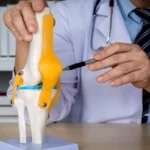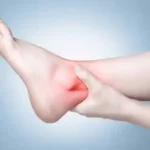Heel pain is a common condition that can make activities like walking or standing uncomfortable. Discomfort often originates from the underside of the heel and may be most noticeable with the first steps in the morning. Understanding the available strategies for managing this pain is the first step toward finding relief. Here are some effective strategies to alleviate heel pain naturally:
Modifying Your Activity
Adjusting your daily activities may help reduce the strain on your heels. Common triggers for heel pain include prolonged standing, high-impact exercise like running, and frequent walking on hard surfaces. If your routine involves these activities, it may be helpful to add frequent breaks into your daily schedule. This gives your feet opportunities to rest and recover. If you work at a standing desk or your job keeps you moving, periodically sitting and elevating your feet helps reduce pressure.
Replacing high-impact cardiovascular exercise with lower-impact options also protects your heels. Swimming or cycling allows you to maintain fitness while decreasing repetitive pounding on your feet. When returning to walking or running, try to stay on softer surfaces, such as grass or an athletic track, rather than concrete. Warming up before physical activity supports your feet’s muscles and ligaments, reducing the risk of overuse or strain.
Changing Your Shoes
The footwear you choose directly affects your foot health. Shoes lacking proper support, cushioning, or shock absorption increase the load on your heels and the connective tissue on the bottom of your foot. To reduce strain, look for footwear that provides structured arch support and a slightly raised heel. This combination helps distribute body weight more evenly, lessening impact and pressure. Avoid walking barefoot on tile or hardwood floors to reduce unnecessary stress on your heels. Checking your shoes for signs of wear, such as thinning soles or reduced tread, also supports foot health; athletic shoes typically lose their support over time and may require replacement more often than casual shoes.
Getting Custom Orthotics
For some individuals, over-the-counter arch supports do not provide adequate relief. Custom orthotics are shoe inserts made to the exact shape and needs of your feet. A podiatrist examines your foot structure, checks for biomechanical issues, and studies your walking pattern before creating these devices. Custom orthotics are designed to address conditions such as flat feet, high arches, or an uneven gait, all of which may increase strain on your heels. By correcting underlying structural issues, custom orthotics help redistribute pressure and reduce painful friction.
Scheduling Physical Therapy
A physical therapist can develop an individualized plan that addresses both the symptoms and the underlying causes of heel pain. A therapist may introduce a combination of gentle stretching, strengthening, and manual therapies to target tissues like the plantar fascia and the Achilles tendon. Strengthening exercises for the calf and foot muscles support stability and balance, which reduces tension transferred to the heel.
Your physical therapist may also offer advice on using ice, massage, or taping techniques to protect your heel during daily activities. Regular sessions help you build a routine for both injury prevention and ongoing comfort. Tracking your progress together supports long-term results.
Manage Heel Pain Today
Making adjustments to your daily activities, wearing supportive footwear, and introducing targeted stretches are practical ways to reduce discomfort. These approaches, when applied consistently, could help reduce stress on your feet and support ongoing recovery. If heel pain persists or disrupts your daily life, seeking guidance from a foot specialist or healthcare provider is a good step. Contact a podiatrist today to schedule a consultation.











